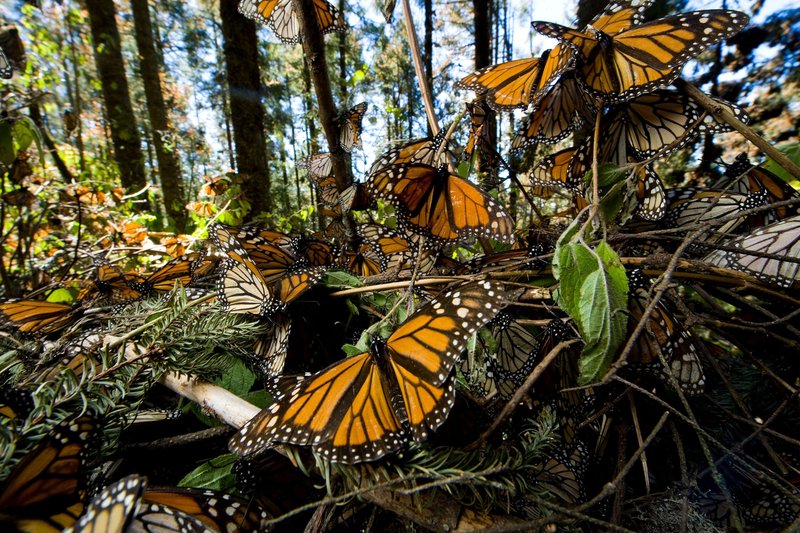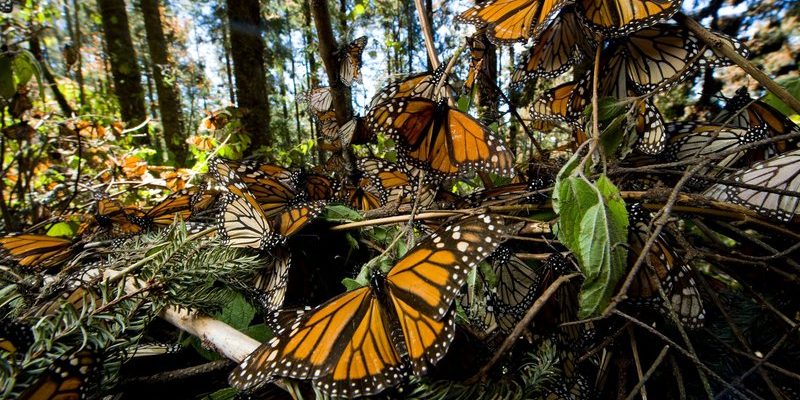
Imagine walking through a sunny meadow filled with wildflowers, only to find a delicate monarch flitting from bloom to bloom. Now, think about what happens when those butterflies encounter obstacles along their journey. Just like how a painter might face unexpected challenges while creating a masterpiece, monarchs have their own set of hurdles. Let’s dive into some of the main predators and threats that these butterflies face throughout their life cycle.
The Butterfly’s Natural Enemies
When we think of what threatens the monarch butterfly, the first thing that comes to mind might be their *natural predators*. These include birds, mammals, and reptiles that see the butterfly as a tasty treat. While adult monarchs have a variety of defenses, including their bright warning colors, they’re still vulnerable to certain predators.
Birds, for instance, are among the top hunters of monarch butterflies. Many birds are attracted to the bright colors of these insects. However, since adult monarchs feed on milkweed plants, they often accumulate toxins from the plant, making them distasteful to potential predators. This strategy might not be foolproof, though. Birds that are less sensitive to the toxins might still snack on them, leading to a decline in monarch numbers.
Another threat comes from smaller predators like *spiders and ants*. While their predation might seem trivial compared to larger animals, they can still have a significant impact on younger monarchs, especially during their early life stages. Once a butterfly is in its caterpillar form, it becomes even more vulnerable to these smaller hunters.
Habitat Loss
One of the biggest threats to the monarch butterfly isn’t just something that *hunts* them—it’s the loss of their natural habitats. Urbanization, agriculture, and climate change have significantly decreased the availability of milkweed plants, which are essential for monarchs’ reproduction.
As cities expand, fields filled with milkweed are replaced with roads and buildings. This loss of habitat not only reduces the food sources for caterpillars but also decreases the places they can find shelter. Without these plants, monarch populations can dwindle, which is concerning given their already fragile numbers.
Farmers also play a role in this habitat loss. Pesticides used in conventional farming can reduce milkweed populations and directly harm adult butterflies. When you think about it, it’s like cutting off a family’s food supply; it’s going to have a ripple effect. The more we can understand these connections, the better we can advocate for practices that protect their environments.
Climate Change and Its Impact
Let me explain how climate change poses a significant threat to monarchs. These butterflies rely on specific weather patterns for migration. They travel thousands of miles from Canada to Mexico every year, and any shift in climate can disrupt this journey.
For instance, unusually warm or cold weather can impact the timing of their migration. If they arrive at their wintering grounds too early or too late, they may find conditions unsuitable for survival. This situation is similar to a traveler arriving at a destination during an unexpected storm—planning becomes useless when nature throws a curveball.
Moreover, changing weather patterns can lead to increased frequency of storms, heavy rains, or droughts, which further threaten their populations. If you think about it, it’s a race against time and nature—monarchs need favorable conditions to thrive.
Impact of Invasive Species
Invasive species—organisms not native to a given ecosystem—can have dire consequences for monarch butterflies. These newcomers can outcompete native plants, like milkweed, for resources. When these native plants are diminished, the monarchs lose crucial breeding and feeding grounds.
For example, plants like *common buckthorn* can take over areas where milkweed grows. This invasion can lead to a decline in food sources and living space for monarchs. It’s like inviting a guest to a party who eats all the snacks and then takes up all the seating—soon, there’s nothing left for the original guests.
Moreover, some invasive insect species can prey on monarch larvae. When the caterpillars are feeding on milkweed, they may find themselves competing with invasive species for food or facing predation, which can lead to higher mortality rates.
Human Activities and Pollution
Human activity has always had an impact on wildlife, and monarch butterflies are no exception. From pollution to the use of harmful pesticides, our actions can create a hostile environment for these delicate insects.
Pesticides are a major concern because they can kill not only the target pests but also non-target species, including butterflies and bees. This is troubling because all pollinators play a critical role in maintaining healthy ecosystems. Without them, many plants, including those that produce our food, suffer.
Air and water pollution also disrupt the habitats that monarchs rely on. Contaminants can affect the milkweed plants, making them less nutritious, or they can harm the butterflies directly. It’s a grim reality that we have to face.
Conservation Efforts: What Can We Do?
So, what can we do to help protect the monarch butterfly? There are many steps we can take, both individually and collectively. Here are a few ideas you might consider:
- Plant Milkweed: Create a butterfly garden by planting native milkweed species. This provides monarchs with the essential habitat they need for breeding.
- Reduce Pesticide Use: If you garden or own land, look for organic alternatives to pesticides. This reduces harm to butterflies and other beneficial insects.
- Support Conservation Organizations: Joining forces with organizations dedicated to butterfly conservation can amplify your efforts. They often have campaigns to plant milkweed and educate others about protecting these butterflies.
- Spread Awareness: Talk about the plight of the monarch butterfly with friends and family. Sometimes, just sharing information can spark interest in conservation.
Conservation isn’t just about saving a beautiful creature; it’s about maintaining the health of our ecosystems. Monarchs are an essential part of the chain.
In the grand tapestry of nature, the monarch butterfly holds a unique and vital place. From their stunning patterns to their incredible migrations, they symbolize resilience in the face of adversity. However, if we want to see these butterflies thrive in the coming years, we need to address the threats they face—from predators to habitat loss, climate change, and human impacts.
Each of us can play a role in their preservation, whether it’s through planting milkweed, reducing pesticide usage, or simply spreading awareness about the challenges they face. The journey of the monarch is a reminder that nature needs our support. Together, we can ensure these beautiful butterflies continue to grace our landscapes, inspiring future generations.

